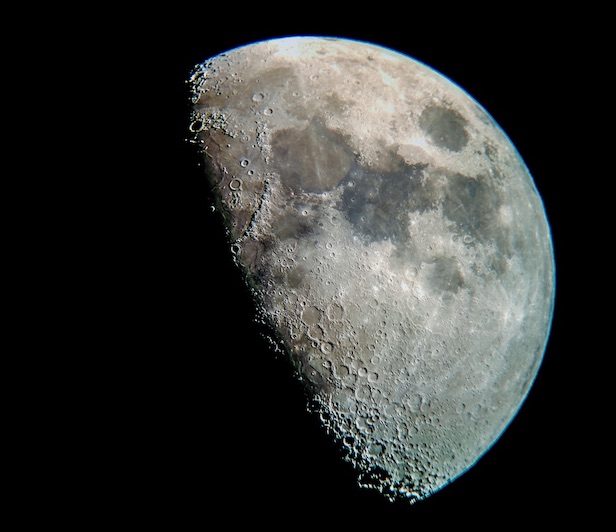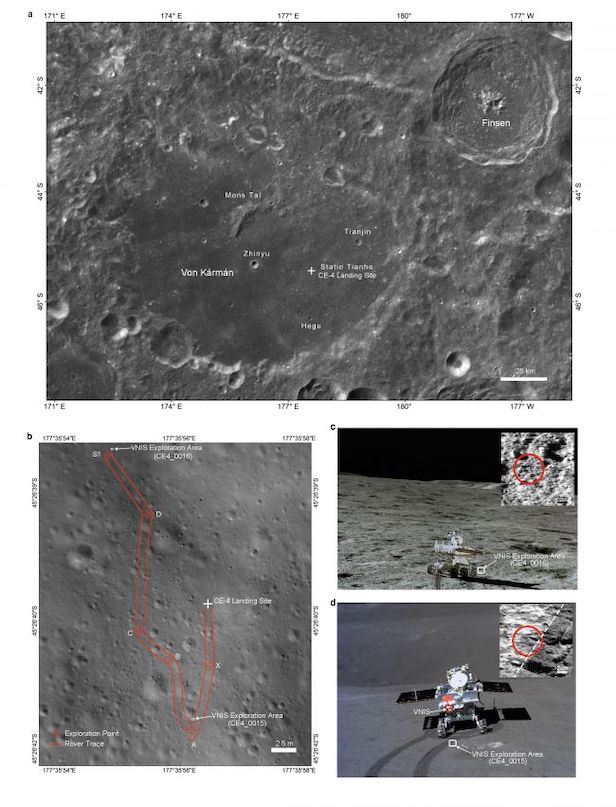China eyes robotic outpost at the Moon’s south pole in late 2020s
The prototype research station will likely be built at the south pole

The Moon’s resource-rich south pole is getting a lot of interest and attention these days. Image credit: Thomas Campbell/NASA
The Moon’s south pole could be getting pretty busy a decade from now.
The region is rich in water ice, which has been building up for eons on the floors of permanently shadowed polar craters. This resource could not only help keep lunar pioneers alive, it could also allow them and other deep-space explorers to get around far more efficiently, NASA officials have said. (Water can be broken into its constituent hydrogen and oxygen, the chief components of rocket fuel.)
So, NASA aims to send two astronauts to the south pole by 2024, and to build up operations there substantially in the ensuing years. Europe is targeting the region for its “Moon Village” outpost, and private industry is eyeing it as well. Commercial landers will help carry NASA payloads and astronauts to the lunar surface, if all goes according to plan, and some companies envision a much broader customer base for their transportation services.
Then there’s China.
The south pole is also in the crosshairs of the nation’s ambitious Chang’e exploration program, which has already sent four robotic missions to the Moon. The Chang’e 1 and Chang’e 2 spacecraft reached lunar orbit in 2007 and 2010, respectively, and the Chang’e 3 lander-rover duo touched down in late 2013. And in January of this year, Chang’e 4 pulled off an unprecedented feat, putting a lander and rover down on the Moon’s mysterious far side.
The Chang’e 5 sample-return mission, scheduled to launch next year, will land on the huge basaltic plain Oceanus Procellarum, about 18 degrees north of the lunar equator. But after that, the focus shifts to the south pole.
Chang’e 6 aims to return samples from the region, and Chang’e 7 will survey the south pole’s environment and resources, researchers with the Chinese Academy of Sciences explained in an overview of the nation’s Moon plans published online today (18 July 2019) in the journal Science. Neither mission has a fixed launch date as of yet, but both will lift off in the 2020s. So will Chang’e 8, whose destination remains unclear at the moment.

These images from the China National Space Agency show the location of the country’s Chang’e 4 Moon lander and path of the Yutu 2 rover on the far side of the Moon. The spacecraft landed in January 2019. Image credit: NAOC/CNSA
These three missions represent the next phase of China’s Moon plans, and they will result in a polar research outpost before 2030, if all goes according to plan.
“Through these missions, a robotic scientific research station prototype will be built on the Moon. Exploration targets will shift focus from development of space technology, to space science and space applications,” Chunlai Li and colleagues writes in the Science paper.
“The Lunar Scientific Research Station, with the capability of long-duration operations and intelligent operational control, will be designed to carry out technical verification and validation of resource development and utilisation technology, explore prospects for applications, enhance the ability of lunar science and resource application, and lay the foundation for the construction and operation of future Lunar Research Stations, as well as exploration of the Moon by humans,” the researchers added.
China is open to collaboration with other countries on these future projects, the scientists wrote, citing the multiple international payloads aboard Chang’e 4.
NASA likely cannot be a significant partner at the moment. Since 2011, the space agency has been prohibited from cooperating with China on space-related activities unless advance congressional approval has been obtained. But China is open to working with NASA to the extent possible, according to Li and colleagues.
“Both sides can start cooperating on aspects such as exchange of scientific data and space situational awareness information,” they write. “China also looks forward to exploring more opportunities to cooperate with NASA to preserve the space environment for generations to come.”
Keep up to date with the latest news in All About Space – available every month for just £4.99. Alternatively you can subscribe here for a fraction of the price!




